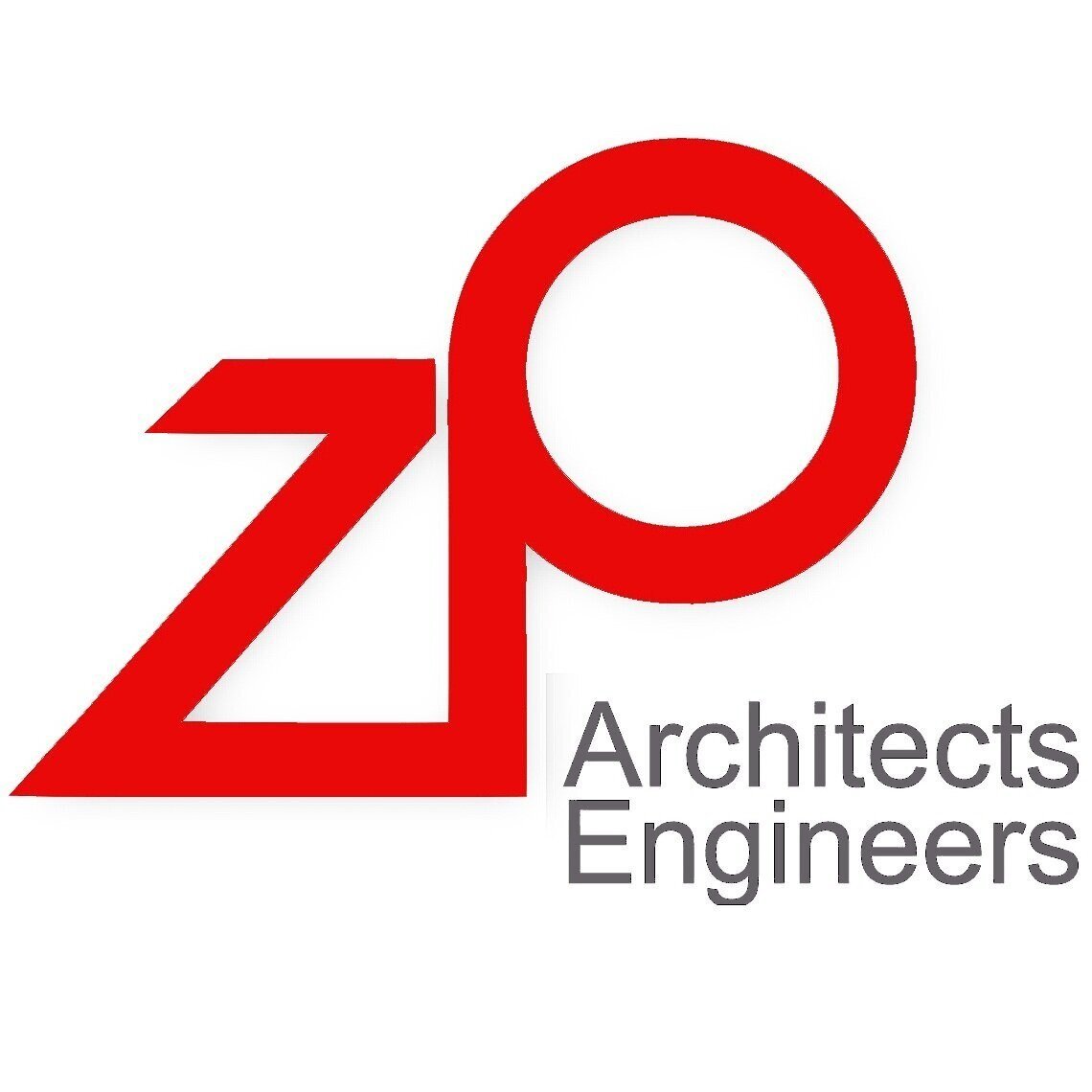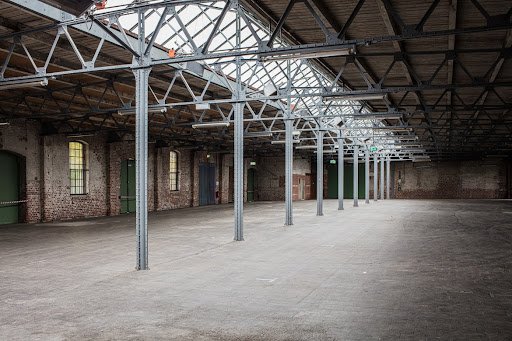A Project Owner's Quick and Easy Guide to Industrial Architecture
As a project owner, you have a vision for your company's future. It’s your job to ensure the missions and goals align with every project.
When the next milestone is as complex as building or buying a new facility, that job can get complicated.
You have a lot of hats to juggle as you handle the budget, secure funding, and appease often-conflicting stakeholders. But if you do it right, the benefits of your new facility can be significant — including a large return on the company’s investment.
Still, dealing with industrial architecture isn’t a matter of liking the looks of a building and buying it. The process usually includes factors like location, availability of an industrial zoning site, and potential conversion facilities.
There are tons of nuances that go into finding a structure that is move-in ready and doesn’t need you to sink money into renovating it.
That’s why you see many companies choosing to build their own facilities. There’s a lot of freedom in designing a layout that makes every process streamlined and smoother.
Whether you choose to build or buy, there are some essentials you need to know about working with industrial architecture. This article will take you through them to help you make informed decisions about your project.
Why Your Industrial Building Design Matters
When you take a few minutes to look at the designs of an industrial neighborhood, you’ll see an eclectic but specialized system of buildings.
Apartments, lofts, and multi-story malls dot the horizon everywhere. These structures will vary depending on where you are, of course.
But in a city like New York, where nearly every industry exists, you get a solid idea of what we mean. Industrial zones are established by the city planning and zoning codes today, whereas, in the past, they relied on the existing city infrastructure, like water tower placement and proximity to highways.
Now, businesses get together and create industrial districts, then integrate infrastructure into the concept.
On one street, you can find all types of modern industrial buildings. Factories, warehouses, and distilleries spread out along the city’s districts.
And right outside the city, in the industrial sector, an almost paradoxical design appears. The foundries, silos, and power plants run in the background.
But this integration of streamlined industrial structures is a relatively new concept.
Beyond Basic & Functional: Stylish & Efficient Industrial Buildings
The history of industrial architecture only began around 300 years ago. The Industrial Revolution in Great Britain (1760-1830) gave us the foundation of today’s modern buildings.
By the time the Second Industrial Revolution took place in the late 1800s, mass production had looked very different. Materials like metal and concrete were easy to extract from the environment. Assembly line methods also made producing bulk goods more efficient.
And thus, the early 20th-century building boom was on.
The Move From Simply Put Together to Intelligently Designed
One of the pioneers in the field, Albert Kahn, introduced us to skyscrapers and industrial plant complexes.
At first, industrial buildings revolved around two needs:
To be functional enough to do the job of the manufacturer
To be safe enough to avoid serious employee injuries
As competition skyrocketed, companies focused on standing out from the crowd. The goals morphed into improving processes, streamlining cost-effectiveness, and attractive designs using Kahn’s principles.
The Right Design Can Make You Money
What did these industrial architects and building owners learn?
Intelligently designing a structure might cost more. But it also made the business exponentially more money.
Imagine the cost-effectiveness in your new warehouse if your ability to house more raw materials increased. What if you were able to include features that sped up your employee’s productivity while still keeping them safe?
When you use industrial architecture to sculpt a building that meets your needs from the ground up, this can happen. Even better is the fact that you’ll be able to source your materials as you choose.
Putting sustainability first with your selections ensures longevity. Not to mention you’ll have less waste as you reallocate and reuse supplies as the situation arises.
With the right design, you can choose how to make your building work for your needs.
The perfect industrial design begins with expertise. Discuss your upcoming project with our team with 50+ years of experience.
How an Industrial Architect Can Make a Statement
You’re the expert in your field, and you know that you can see things that make the job easier that others miss. That’s what an industrial architect does for project owners looking to build their own business from scratch.
The forte of an industrial architect can range from simple to complex. They can design a basic office building store one day. The next day, they’ll work with a transportation engineer to support infrastructure that enhances communication or transportation across state lines.
In other words, they can take your vision for your business’s future and make it a reality.
The planning process is similar to when you buy an already-made building and use creativity and problem-solving techniques to make it your own.
Your complete structure will tell everyone who sees it about your company. So you’ll want an experienced architect to work alongside you as you make plans.
Make Your Building Become Your Statement Piece
The exterior and interior of your custom building are the first impression a potential client has of your work, whether you buy or build. Therefore, it should align with your brand — the visual and concise summary of the business’s purpose.
What will they see?
Do you want your business to make the statement another owner chose?
Consider the structure of your average rustic breweries, for instance. As a tech company, taking over an abandoned brewery might require millions of dollars to make it match their brand.
A good architect that understands the brand can convert any building type into a new design statement. Or, the company could build a facility from the ground up to satisfy their specific building program needs.
What Should Your Building Say?
What does your brand say about your company?
Are you modern and sleek, simple and straightforward, eco-conscious and all-natural?
With your company’s dream and vision in mind, your team of architects creates the statement you’re trying to make. And, they do it all with precision efficiency.
Tasks of the Industrial Architect
Here's another cost-effective bonus of building over buying:
The industrial architect takes over the majority of the overseeing responsibility.
Unless you have a background in everything from design to construction, many of the jobs will be beyond your scope. So how will you monitor the general contractor and laborers while still doing your own job each day?
Fortunately, those duties fall back on the architect, including, but not limited to these tasks:
Developing and communicating plans and coordinating the design consultant team
Interacting with contractors and conducting field observations for the owner
Organizing, planning, and assigning jobs in the design phase
Writing and reviewing specifications
Handling, developing, and maintaining schedules based on your goals during the design phase
Producing ballpark estimates and forecasting budget expectations
Rather than spending hours every day juggling these tasks on top of everything else you’re doing, you pay the architect to do them.
It’s a wise investment that frees up your time and gives the role to the person trained in handling each aspect.
Keeping Up With the Trends & Policies
When you’re building a structure as complex as a business, it’s not only about staying on top of the construction and architectural design industry. You also have to predict what the future holds.
The facility should last decades, if not longer.
Industrial architects know the trends in store with factory planning and building. They can advise you if you’re going down a rabbit hole of wasted money or give you an early heads up something better is coming down the pipeline.
Getting an architect involved before the building or site purchase also ensures you have a due diligence aspect covered. The architect team employs a discovery phase before you spend any money, flushing out the building criteria for the new design.
For an industrial facility, this means ensuring the existing building structure limitations can hold new modifications and allow for truck site access. Architects also address the potential of ADA access, building expansion, and other criteria.
Do You Want to Keep Up With Legislation?
They also know when government regulations are changing.
It can be hard enough to keep track of new legislation in your own industry, much less one as complex as industrial architecture.
But it’s the architect’s job to know the past, present, and future of designing structures.
Permit and zoning changes are not an issue when working with an expert architecture firm. You'll get peace of mind knowing that if a permit or code is currently in the process of legislation to make it stricter, your team will know the details.
They’ll let you know what’s going on and help you adjust your plans while it’s early enough. Otherwise, you could be stuck shelling out hundreds or thousands of dollars to make those same changes in the future.
Building or Buying: Which One is Better for You?
The benefits of building over buying industrial facilities are clear, yet that doesn’t make them the best choice for everyone.
After all, you may not be the only person making the decision. And you have to convince the stakeholders that whichever way you suggest is truly the better option.
As you’re deliberating, consider these two main factors.
Deadlines
The most important goal is ensuring a building will satisfy your needs. But the schedule of when you need the building completed is close behind.
Designing the floor plans, pulling permits, and constructing a building doesn’t happen overnight. The city approval process often dictates the overall schedule, and this can be very slow in many jurisdictions.
How long it will take to complete will depend on things like city approval, how complex the structure is, and how backed up contractors and laborers are. Getting building materials and pulling permits is another factor that is out of the hands of the architect.
If you’re considering having your structure built from the ground up, contact a firm like ZP Architects. They’ll give you an idea of how long the architecture project will take. You may not have that much time to wait.
But, it could also be months or longer before the right real estate property shows up on the market.
If you have to settle for something less than perfect, now you have the wait time for renovations. Changing a manufacturing facility to office space, for instance, is going to be a lengthy undertaking. It could take as long as it would have taken to build if you have detailed, complex renovations in mind.
Cost
The second urgent factor is the cost. Understandably, these types of industrial buildings aren’t cheap.
Buying a pre-made structure could be less expensive at first than building. Yet, you lose out on the productivity and efficiency that boosts long-term profitability.
For example, say you have to renovate to add high ceilings and bring in natural light or replace old, insufficient ductwork. Those costs will roll into the final total, as well.
Sit down with an architectural firm and discuss your goals.
Are you designing a distribution center with wide-open spaces and a minimalist structure?
Or do you need something more complex and complicated?
The answers to those questions and more will determine the estimated cost. You can then compare that to the going rate of real estate in the area for your ideal building.
Learn more about hiring an architect in our post: Things to Look for in a Commercial Architect.
Choosing an Industrial Architect Team
The next step is to make an appointment to discuss your plans with an architectural team. Keep in mind that not all architect fields are the same.
Look for someone with experience with your particular industry.
What to Look For in an Architectural Team
Research the firm before and after your meeting.
What skills and education would each member of your team have?
It’s also essential that the firm has a commercial engineering network already in place. Otherwise, you could spend months waiting for a specific engineer in a certain specialty to pick up your contract and do the work.
Cost matters, of course.
The estimate should be reasonably in line with going rates. Although, you should expect to pay a little more for an in-demand company with a stellar reputation.
During the meeting, don't hesitate to ask as many questions as you have.
The right firm will not only be knowledgeable and answer them clearly, but they’ll also be patient and willing to listen. So then, when you walk out of the meeting feeling like the architect “gets” your vision and shares your excitement, you’ve found the right place.
Conclusion
Industrial design and architecture is a complex network of interwoven pieces. A good architect with industrial design expertise will incorporate all the complex pieces of your project into a whole building design that takes your company into the future.
Don’t take chances and trust any architecture firm out there to build your building and project your brand.
For your Denver area project, contact ZP Architect, a team of skilled experts ready to turn your industrial building into a vision come true.








